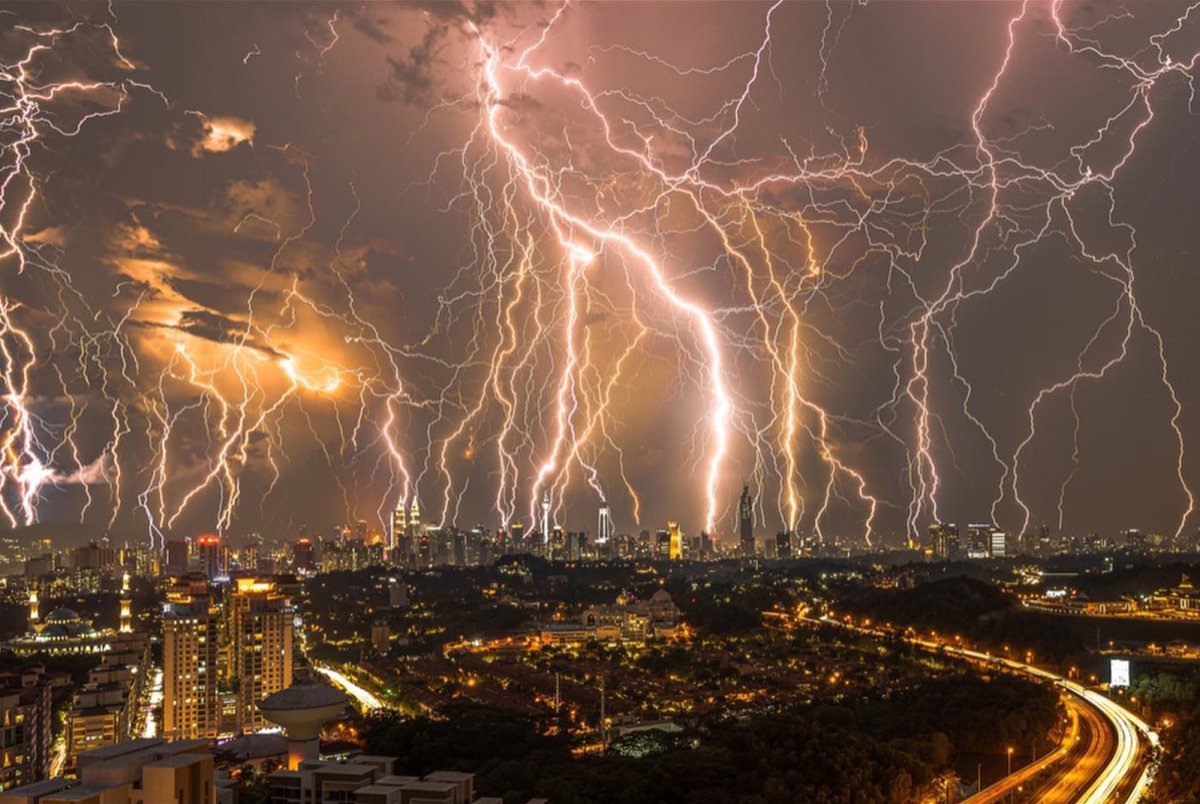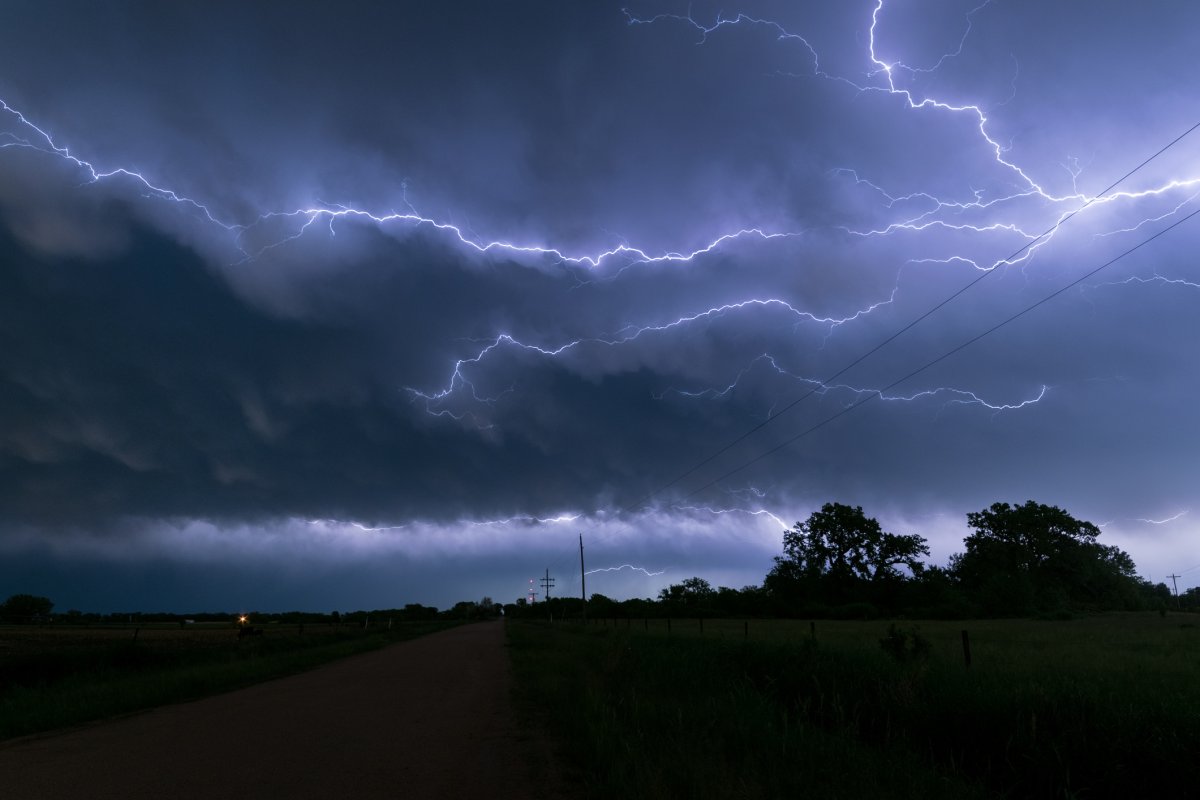A dramatic stack photo of a lightning storm has been captured by photographer Fendy Gan. The stunning image, taken in the Klang Valley in Malaysia, is a compilation of 32 individual shots snapped over the course of 40 minutes.
"I just set my camera on interval shooting and merged the results with photoshop," Gan told Newsweek.
The image captures a startling lightning storm shot above the city of Kuala Lumpur.

"We get plenty of lightning most of the year," Gan said. "But this particular storm was extra special because of how clear the sky was and how frequent the strikes were."
Malaysia is one of the most lightning-prone countries in the world. Klang Valley, a conglomerate of some of the country's biggest cities, is subject to particularly stormy weather. "I believe Klang Valley has some of the highest lightning strike frequencies in the world," Gan said.
Lightning occurs when a charge imbalance is created across a thundercloud. "As tiny water droplets form inside a storm cloud, they are propelled towards the top of the cloud by strong internal winds–updrafts–where they turn to ice," Oliver Claydon, a spokesperson for the U.K. Met Office, previously told Newsweek.
"Some of the pieces of ice grow into hail, but others remain very small. Some of the hail that forms becomes too heavy to be propelled by the updrafts and so begins to fall back through the cloud, bumping into smaller ice particles as they do so.
"During these collisions, electrons are transferred to the hail, giving the hail a negative charge, while the ice particles that have lost electrons gain a positive charge," he said.
This charge imbalance continues to build across the cloud as the lighter, positively charged ice particles are continually swept upwards and the heavier, negatively charged hail sinks down.
"As well as being attracted to the positive charge in the top of the cloud, the surplus of electrons in the cloud base are attracted to positive charge in other clouds and on the ground," Claydon said. "If the attraction is strong enough, the electrons will rapidly move towards the positive atoms. The path they make in doing so forms the channel we see during a flash of lightning.

"[The] electrons shoot down from the cloud, cutting through the air at around 270,000 miles per hour."
The U.K. Met Office has estimated that, around the world, there are over 3,000,000 lightning flashes every day. But some parts of the world are more susceptible to lightning than others.
Imagery from NASA's satellite observations has indicated that lightning is more likely to strike over land than sea, and it's more likely to occur close to the equator. The only two regions with more lightning than the Klang Valley are eastern Central Africa and northwestern South America.
In the U.S., the National Weather Service has estimated that there are around 25 million lightning strikes a year, producing 20 fatalities on average. In the event of a lightning storm, the CDC recommends seeking shelter immediately, avoiding open spaces, tall structures, and electronic equipment.
Uncommon Knowledge
Newsweek is committed to challenging conventional wisdom and finding connections in the search for common ground.
Newsweek is committed to challenging conventional wisdom and finding connections in the search for common ground.
About the writer
Pandora Dewan is a Senior Science Reporter at Newsweek based in London, UK. Her focus is reporting on science, health ... Read more
To read how Newsweek uses AI as a newsroom tool, Click here.








